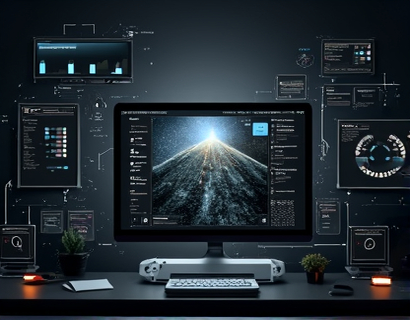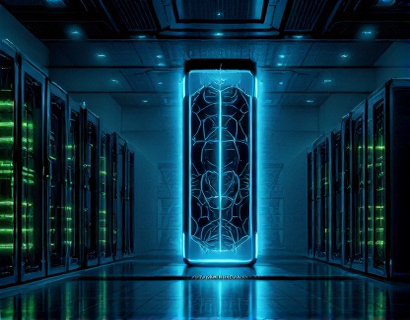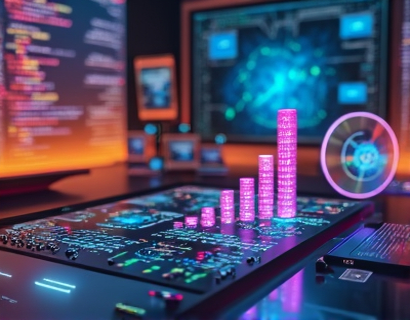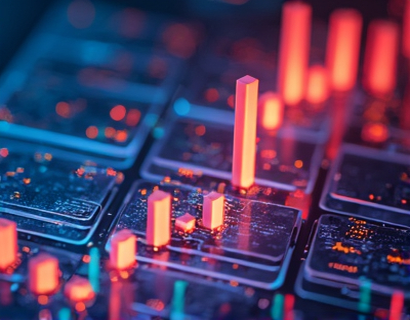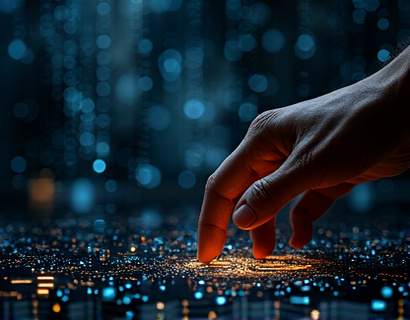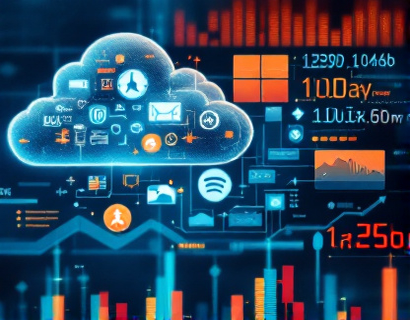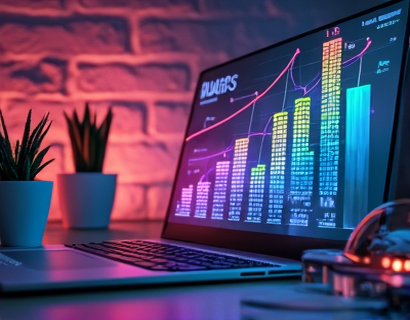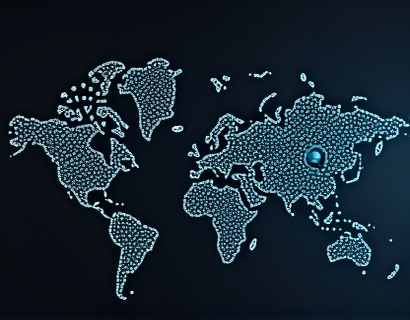Decentralized AI and Crypto: Transforming Digital Experiences in the Ucosystem Era
The intersection of decentralized technologies, artificial intelligence, and cryptocurrency is giving rise to a new paradigm in digital interactions. This era, often referred to as the Ucosystem, is characterized by innovative solutions that leverage blockchain, AI, and decentralized applications to enhance user engagement and redefine digital experiences. This article delves into the transformative potential of these technologies, exploring how they are reshaping the digital landscape and creating new opportunities for users and developers alike.
Understanding Decentralized AI
Decentralized AI refers to the development and deployment of artificial intelligence systems that operate on decentralized networks, primarily blockchain. Unlike traditional AI, which relies on centralized servers and databases, decentralized AI distributes data and computation across a network of nodes. This approach offers several advantages, including enhanced security, privacy, and resilience against single points of failure.
The core idea behind decentralized AI is to harness the collective power of a distributed network to perform complex computations and data processing tasks. By leveraging the resources of multiple participants, decentralized AI can achieve higher efficiency and scalability. This is particularly important for AI applications that require vast amounts of data and computational power, such as machine learning models and natural language processing.
Cryptocurrency and Decentralized AI
Cryptocurrency plays a crucial role in the ecosystem of decentralized AI. Blockchain technology, the underlying infrastructure for cryptocurrencies, provides a secure and transparent way to manage transactions and data sharing. In the context of decentralized AI, cryptocurrency serves multiple purposes:
- Incentivization: Cryptocurrency can be used to reward participants for contributing computational resources or data to the network. This incentivizes more users to join and actively participate, thereby enhancing the overall performance and reliability of the AI system.
- Data Ownership: Blockchain ensures that data remains under the control of its owners, providing a level of privacy and security that is often lacking in centralized systems. Users can choose to share their data selectively and receive compensation in cryptocurrency for doing so.
- Trust and Transparency: The immutable nature of blockchain records ensures that all transactions and data exchanges are transparent and verifiable. This builds trust among participants and reduces the risk of fraud or manipulation.
Decentralized Applications (DApps) in the Ucosystem
Decentralized applications, or DApps, are a key component of the Ucosystem. These applications run on decentralized networks and are governed by smart contracts, which are self-executing contracts with the terms directly written into code. DApps offer several benefits over traditional centralized applications:
Firstly, DApps are more resilient to censorship and downtime. Since they are not controlled by a single entity, they are less vulnerable to attacks or shutdowns. Secondly, DApps provide greater user control and autonomy, as users have direct access to their data and can interact with the application without intermediaries.
In the context of AI, decentralized applications can leverage decentralized AI to perform tasks such as data analysis, predictive modeling, and decision-making. For example, a decentralized finance (DeFi) platform can use AI to optimize trading strategies, assess risk, and manage assets more efficiently. The AI models are trained on data contributed by the network, and the results are shared transparently among all participants.
Enhancing User Engagement through Decentralized AI
One of the most significant impacts of decentralized AI is the enhancement of user engagement. Traditional AI applications often suffer from issues such as data silos, lack of transparency, and centralized control, which can lead to user disengagement. Decentralized AI addresses these issues by creating more open and participatory systems:
Firstly, the decentralized nature of these systems encourages community involvement. Users can contribute data, compute resources, and even participate in the governance of the AI system. This sense of ownership and participation fosters a stronger connection between users and the application.
Secondly, decentralized AI can provide more personalized and context-aware experiences. By leveraging data from a diverse and decentralized source, AI models can better understand user preferences and behaviors, leading to more accurate and relevant recommendations and services.
Lastly, the transparency and trust built through blockchain technology can increase user confidence in AI-driven applications. Users are more likely to engage with systems that they perceive as fair, secure, and transparent.
Case Studies and Real-World Applications
Several projects and platforms are already demonstrating the potential of decentralized AI and cryptocurrency in the Ucosystem. One notable example is the use of AI in decentralized identity management:
Identify.me is a decentralized identity solution that uses blockchain and AI to give users control over their digital identities. Users can create a verifiable and portable identity that they can share selectively with different services. The AI component helps in verifying the authenticity of identities and detecting fraudulent activities. This not only enhances security but also empowers users to manage their digital presence more effectively.
Another example is the application of AI in decentralized healthcare. Platforms like MedBlock use AI to analyze medical data from various sources, providing insights and recommendations to healthcare professionals. The decentralized nature of the platform ensures that patient data is securely stored and managed, with users having full control over their information. AI-driven analytics can help in early disease detection, personalized treatment plans, and efficient resource allocation.
Challenges and Future Directions
While the potential of decentralized AI and cryptocurrency is immense, there are several challenges that need to be addressed to fully realize this vision:
Firstly, scalability remains a significant issue. Decentralized networks, especially those using blockchain, can face performance bottlenecks as the number of users and transactions increases. Innovations in blockchain technology, such as layer 2 solutions and more efficient consensus mechanisms, are crucial to overcoming this challenge.
Secondly, regulatory uncertainty poses a risk to the adoption of decentralized AI and cryptocurrency. As these technologies evolve, it is essential to work with regulators to create a clear and supportive legal framework that encourages innovation while protecting users.
Finally, education and awareness are key to driving broader adoption. Many users and developers are still unfamiliar with the concepts of decentralized AI and cryptocurrency. Initiatives to educate and provide resources can help build a more informed and engaged community.
Conclusion
The convergence of decentralized AI and cryptocurrency is paving the way for a new era of digital experiences. By leveraging the strengths of blockchain, AI, and decentralized applications, we can create more secure, transparent, and user-centric systems. The Ucosystem represents a promising future where technology serves to empower individuals and foster innovation. As we continue to explore and develop these technologies, the possibilities for transforming digital interactions are endless.







